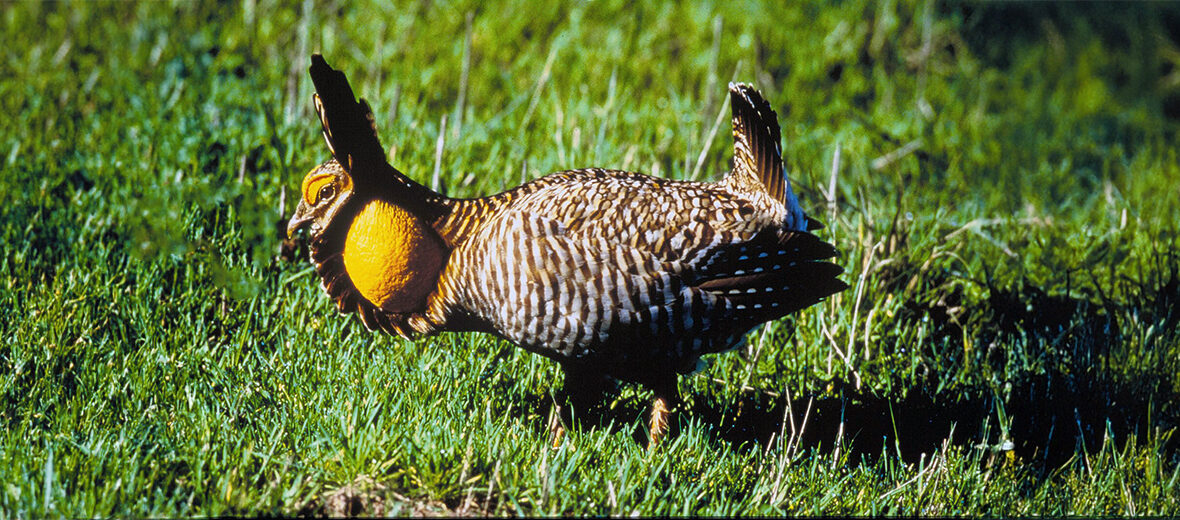
The Attwater’s prairie-chicken, a subspecies of the greater prairie-chicken, hails only from a few counties in Texas in the United States. These birds face the threats of habitat loss and destruction at the hands of farming, ranching, and renewable energy; habitat division at the hands of roads and railroads, that cause vehicle strike (being hit by vehicles); hunting; trapping; invasive species, and with them predation; and pollution. The IUCN lists these prairie-chickens as Critically Endangered. Their population trend is listed as increasing, albeit slowly.
First the Stats…
Scientific name: Tympanuchus cupido attwateri
Weight: Up to 42 ounces
Length: Up to 18 inches
Wingspan: Up to 28 inches
Lifespan: Up to 5 years
Now on to the Facts!
1.) Males have a bright orange or golden air sac on either side of their neck that is inflated when courting females.
2.) At 1 time these prairie-chickens dwelled in area around 9,375 square miles. Today, populations exist in the wild at just 2 locations: the Attwater Prairie Chicken National Wildlife Refuge near Eagle Lake, Texas; and on private lands in Goliad County.
3.) Grass shoots, flower petals, seeds, and insects like grasshoppers are all on the menu.
4.) Coyotes, hawks, owls, raccoons, skunks, opossums, and snakes all prey on these birds.
5.) In circa 1900s, around 1,000,000 Attwater’s prairie-chickens inhabited the coastal grasslands. As of 2021 surveys, fewer than 100 wild birds remain.
But wait, there’s more on the Attwater’s prairie-chicken!
6.) Mating rituals take place from January – May.
7.) During the mating season, these birds gather in small groups on short grass, bare ground, or hilly areas to find a mate. This area is called a lek or “booming ground.”
Did you know…?
Some of the traditional dances of the North American Plains Indians are based on the prairie-chicken’s booming display.
8.) While courting the male emits a booming, “woo-woo” sound from his neck sack, causing it to inflate, and struts around to attract a female.
9.) Females lay up to 14 eggs in the tall grass that hatch in up to 26 days.
10.) Only 21% of the eggs make it to hatching, as the rest are taken by predators.
But wait, there’s still more on the Attwater’s prairie-chicken!
11.) In 2023 the Attwater’s prairie-chicken was displayed on a United States Postal Service Forever stamp as part of the Endangered Species set, based on a photograph from Joel Sartore’s Photo Ark.
12.) Their preferred habitats are coastal prairies with a mix of short, mid, and tall grasses.
13.) These birds are diurnal (active during the day).
Now a Short Attwater’s Prairie-Chicken Video!
Be sure to share & comment below! Also, check out the Critter Science YouTube channel. Videos added regularly!

Want to suggest a critter for me to write about? Let me know here.
Some source material acquired from: Wikipedia & IUCN
Photo credit: George Lavendowski



